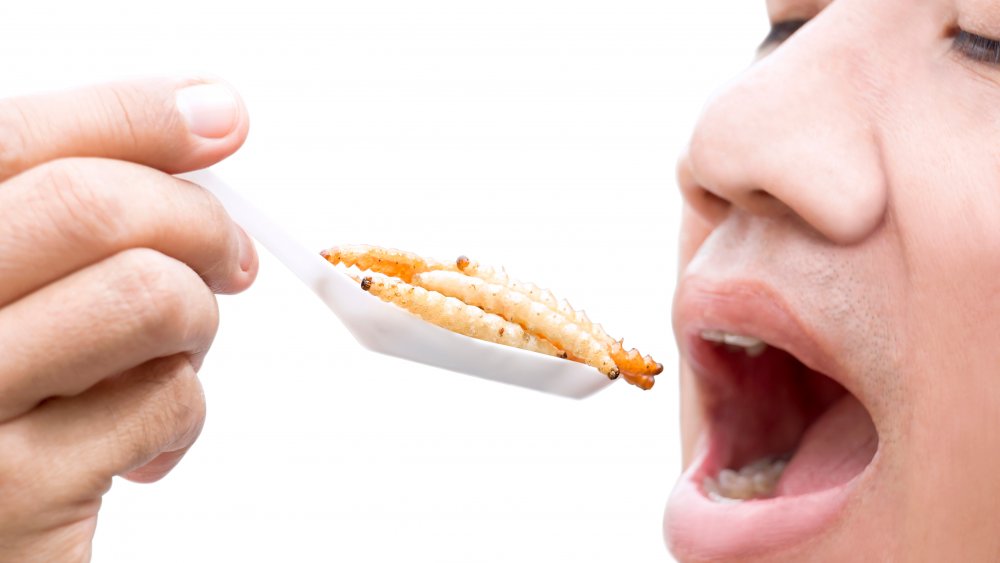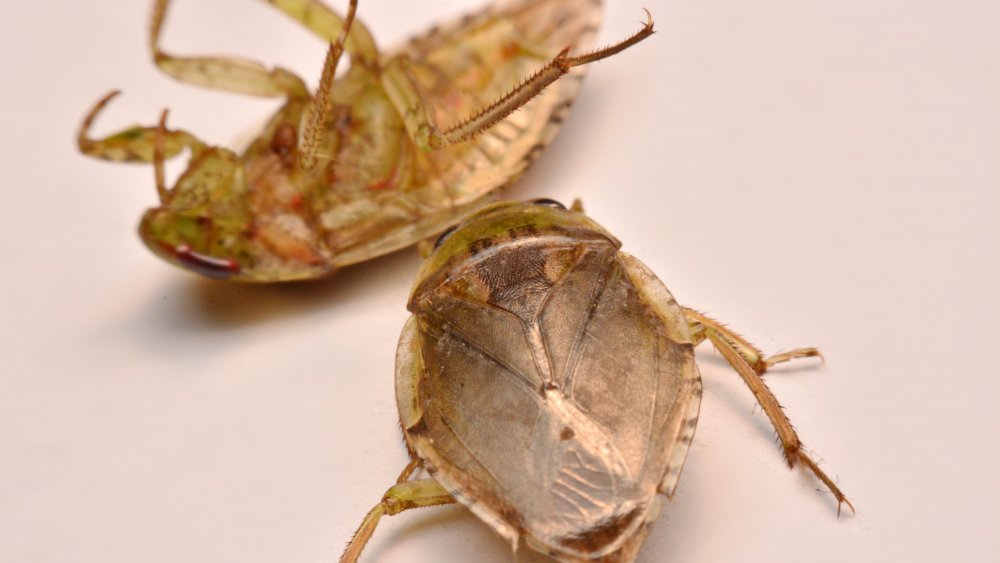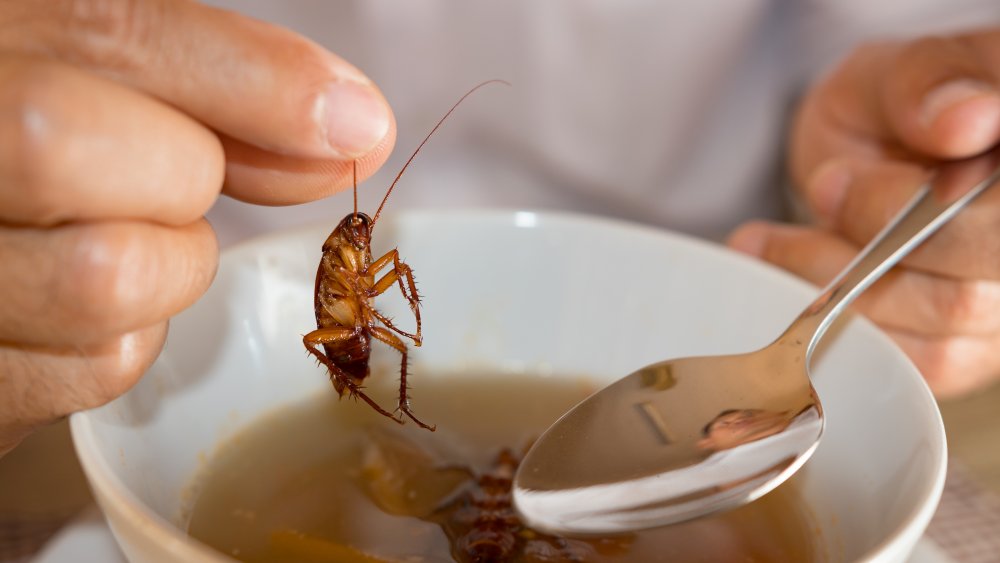Here's How Many Insect Parts Are Allowed In Your Food
What's your take on edible insects? Are you all, bring them on, I'm ready for Fear Factor? Or are you cringing so hard just even thinking about how disgusting it would be? Well, whether you want to or not, you may unknowingly be chowing down on dozens and dozens of little bitty buggy parts every single day. Wait, what? How can this be? Isn't the government supposed to protect our food supply from insectoid invaders? Well... sort of.
The US Food and Drug Administration does have rules and regulations regarding the presence of contamination (bug-based or otherwise), but even they realize that our food supply is never going to be 100 percent contaminant-free. In fact, they come right out and admit that "[i]t is economically impractical to grow, harvest, or process raw products that are totally free of non-hazardous, naturally occurring, unavoidable defects," (via CNN Health), but just what they seem to think is an acceptable level of unexpected added protein is pretty off-putting. In fact, once you learn the number of insect parts permissible in a number of popular food items, you may be in for quite a nasty surprise.
The USDA's guidelines on insect infestation in food
Fruits and vegetables seem clean and healthy, don't they? Think again. Fresh asparagus is allowed to contain 10 or more thrips per ounce, and a half-pound of golden raisins is permitted 35 fruit fly eggs and 10 or more whole insects, or an equivalent amount of insect heads and legs. A single unit of canned or frozen spinach may have 50 thrips, aphids, and/or mites, or possibly the larvae of spinach worms — or even eight whole leaf miner bugs. A can of sweet corn is permitted two or more corn earworm larvae, as well as larvae fragments and shed skins. Canned mushrooms are really concerning, with 20 maggots "of any size" permitted in just a four-ounce can. Canned tomatoes are a bit better, though, with only two maggots permitted per 16 ounces — what a relief! Tomato juice, though, is not so great, as a 14-ounce can is allowed to include four maggots and 20 fruit fly eggs. Canned citrus juices can have five or more fruit fly eggs and one maggot per cup.
Even one of the FDA's most highly regulated foods, peanut butter, may contain up to four insect fragments per tablespoon. Spaghetti is a real shocker, with 450 insect parts in a one-pound box. Spices aren't safe, either, with 10 grams of oregano allowed to contain 300 insect parts, and black pepper up to 40 parts per teaspoon. And brace yourselves for some really bad news — a chocolate bar could contain up to 30 insect parts.
How do food inspectors even count these insect parts, anyway?
Each food manufacturer employs its own quality assurance team, and these lucky employees are charged with taking samples off the production line and checking them for acceptable levels of bugginess. And yes, sometimes they really do have to get in there and count bug body bits with their own hands. But what do they do if they find a bad batch of a particular foodstuff, where there are too many bugs to satisfy even the less-picky-than-we'd-hoped FDA? Is it up to the quality control team to remove the excess insect parts? Nope, not possible. In that case, they'd have to remove that particular batch from the distribution chain, but even then, the food manufacturers will re-purpose any item if possible. One example given by North Carolina State University agricultural and human sciences professor Ben Chapman, interviewed by CNN Health, was that of a buggy bag of cranberries: it can't be sold as-is, but could be turned into cranberry sauce where the excess bug bits could be skimmed off the top during the cooking process.
Insects in your food: gross, but safe
Bummed about eating bugs? Don't worry, be happy — at least, this is pretty much the advice given by Professor Chapman. Ok, he didn't use those exact words, but he did oh-so-helpfully point out that, hey, at least eating bugs won't give us food poisoning or anything. Oh yay.
"Look, this is all a very, very, very low-risk situation," Chapman said. "I look at it as a yuck factor versus a risk factor. Insect parts are gross, but they don't lead to foodborne illnesses." So now you can enjoy your teensy bug parts without worry — right?



